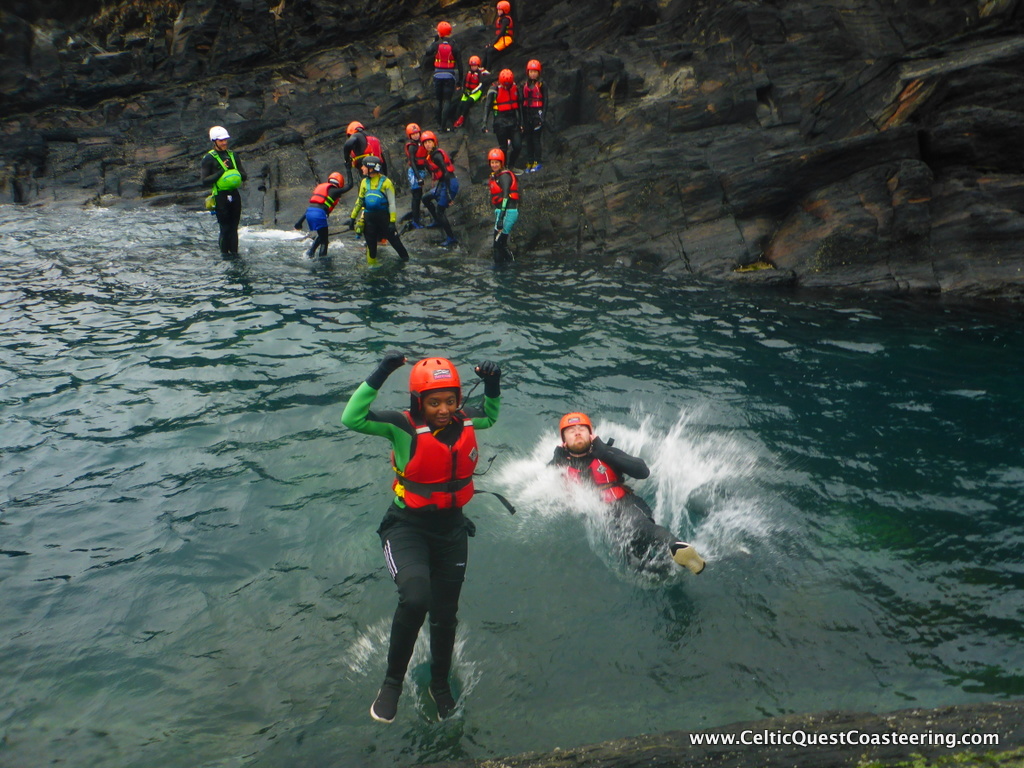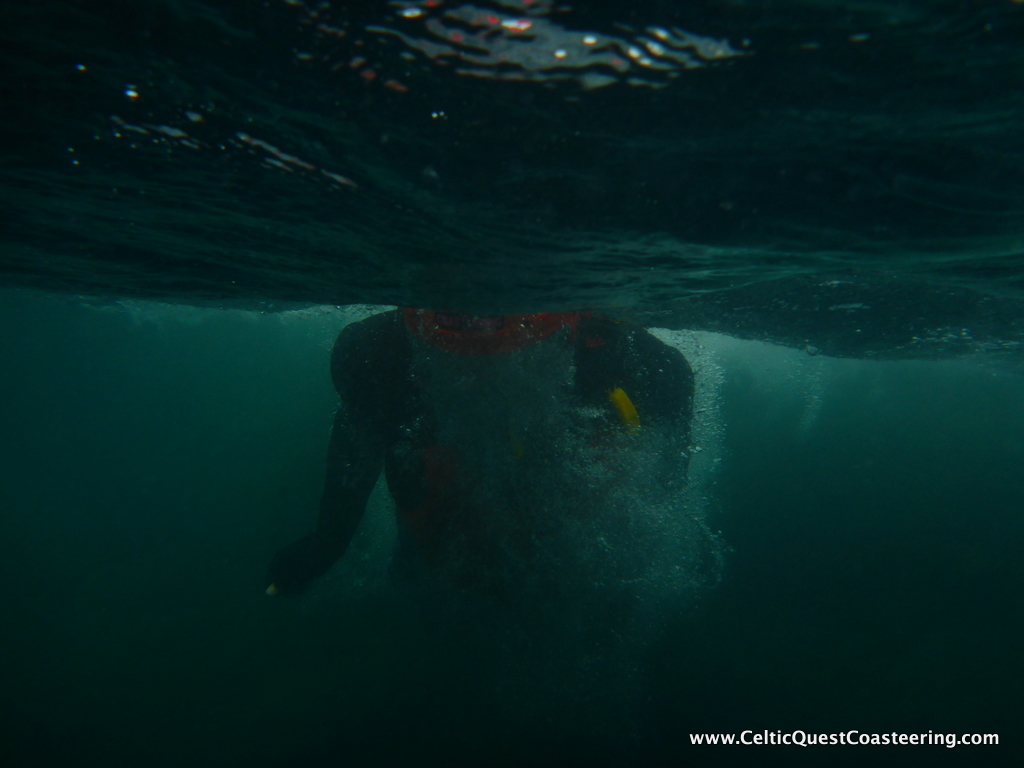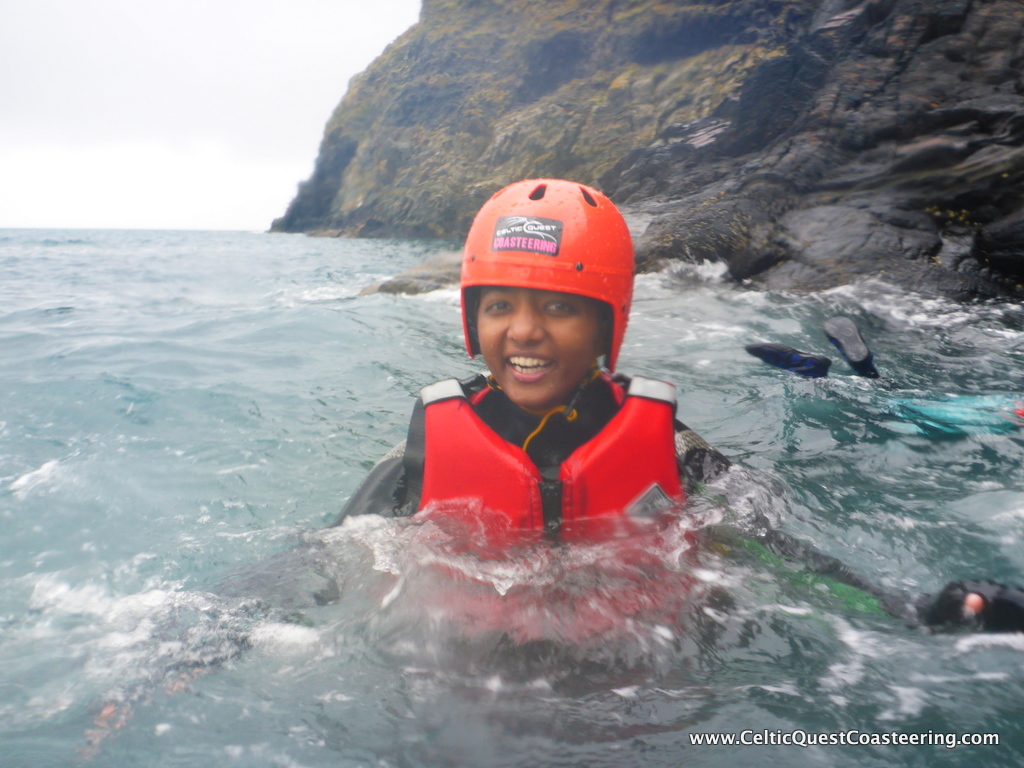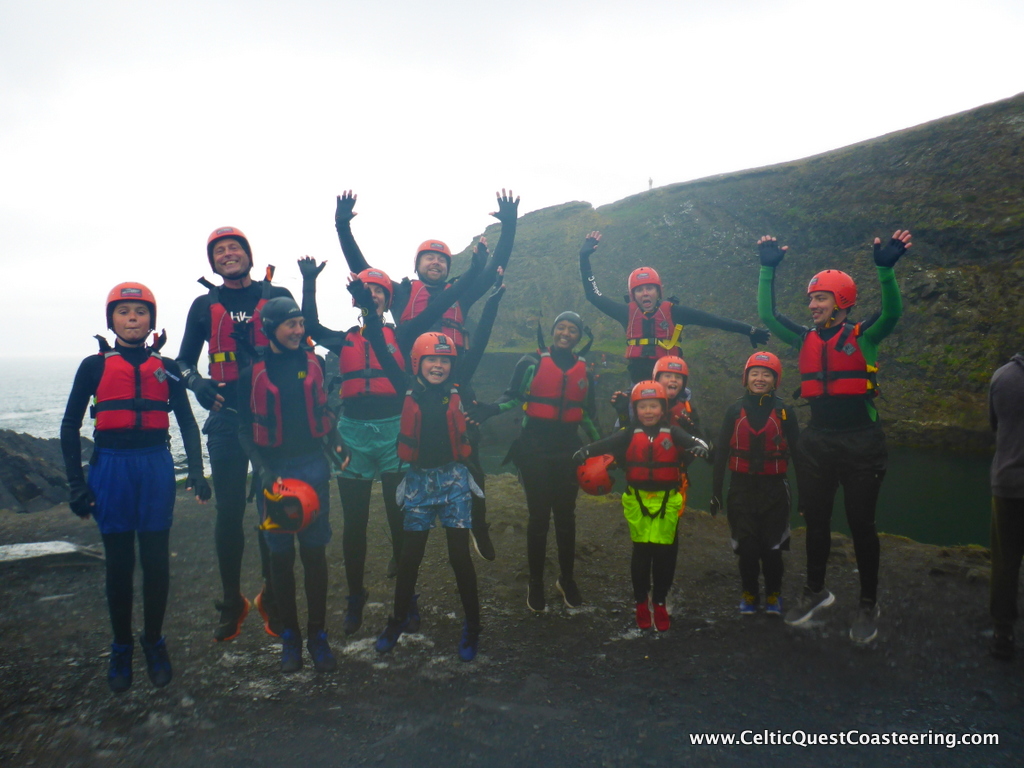As a person who gets scared of water getting into my nose and ears, doing this was an impulsive decision I took to get over my fear.

It was not the tallest level from which I was supposed to take that leap of faith but the first. Jerry, who was my guide for the trip was in the water waiting to click that perfect picture of my first jump and my heart was pumping blood higher than the waves hitting the tip of the rock I was standing on.
The first one is never easy. With trembling feet, I looked down at the water and thought to myself that there’s no way I’ll see the surface again after the dive. Right at that moment, Jerry goes “3… 2… 1!” and that was the cue to jump. I held my breath and jumped.
The stress of doing this hadn’t crept in until the company I had booked this adventure with handed over a wet suit and a buoyancy aid. This activity was born in Pembrokeshire and that made me determined to do it in its birthplace. The booking for two people came up to £116 which included all the clothing and equipment needed and the wonderful pictures and videos taken whilst we were doing something that literally took our breath away.
Before this big leap of faith, we walked along the beautiful coast of the Abereiddy beach near Pembroke wearing all the safety and protection gear provided. This included a wet suit to be worn over our swimwear, buoyancy aid jacket, head cap, helmet, and an old pair of trainers if your own aren’t yet quite worn enough to spend the day in the depths. It is also advised to wear an old pair of shorts for modesty purposes.

The first jump made me realise that the water and the gear I was wearing helps me float after the plunge. But because of my weight and the force with which I jumped, there was a moment beneath the waves. The shark movies I had watched as a teen made me open my eyes just to make sure there are no open jaws approaching me. The two seconds inside felt like 10 minutes.
As soon as I got out and saw the surface again, Jerry was right there smiling and waving his hand. He said, “That was a picture-perfect jump!” His excitement after each jump, although that’s his full-time job and he might have seen thousands of people do the same over the years, never failed to amuse me.
I slowly floated towards the shore. Once you are in the water after the dive, you don’t realise you’re near the shore. I found myself trying to swim even though I could just put my feet down (literally) and stand up in the water that came up to my knee.
Once all the members of the group were done with their first jump, we all moved on to the next part of our coasteering journey — a higher jump. In coasteering, you normally start with the smallest height to make sure you get accustomed to the water. The height of subsequent leaps just keeps on climbing until, for the final jump you find yourself looking down from a tower several meters tall, understanding that you’ll soon be taking a run and jump into the deep blue depths of the Blue Lagoon so far below.
It is the first one that either makes or breaks you when it comes to such adventures. This one hadn’t broken me yet. It made me want to do the next one which was the side jump. “You can even make a superhero pose to look really cool”, said Jerry when we were getting ready for this.

While watching the others do their jumps, I thought of Spiderman, Batman, Superman, and even Deadpool. But as soon as I was next, my heart started racing again. This time the anxiety wasn’t as much as the previous one. But it had still made its way in a little bit. I knew how it felt to jump off the rocks. I also knew how it felt to be underwater and then float to the surface right after. More importantly, there are no big sharks I need to beware of.
As we kept moving on to the next jumps, my confidence kept building up. While my idea of getting over my fear was working out well, my wet suit wasn’t a well-fitted one. Eventually, ice-cold water had made its way in.
When we were about halfway through this three-hour adventure, my wetsuit was filled with ice-cold water. There was no way it could get out and I had started shivering. The sun was hidden amidst the clouds, and there was no warmth anymore. The coastal breeze made the place even colder. I skipped one of the jumps as the drop in temperature had got to me. While I sat on the rocks shivering instead of jumping like the others, Jerry asked, “Don’t you want to jump?” I said, “It’s too cold. Don’t think I can do this one.” He understood and carried on helping the others.

While this picture looks really cool, it was taken during the time I opened my eyes to look out for the jaws 
Smiling in the water while I was shivering because of the cold
After the next jump which was from a rock that was twice as tall as me, we had to swim for about 50 meters to a nearby shore. Being a non-swimmer, I was doing all the doggy paddling I could until I realised, I wasn’t moving at all. Swimming might be tiring but if you are swimming and not getting anywhere, it is exhausting. While I might have been doing it wrong, the water current that was flowing in the opposite direction wasn’t helping either.
I took a break from “swimming”, and then tried again. It just didn’t work. Then I saw this bright orange rope swung towards me. It was Jerry to the rescue. He asked me to catch the rope so that he could help me get to the shore.
Because of the cold water in my suit, I had a slight pain in my chest. I made a mental note to always check the size of the wetsuit before starting off with the expedition. Even if your wetsuit is slightly bigger, it makes affects your journey above and under the water.
In the next part, we did something that became my favourite — we had to lay on the water and let the waves take us back and forth from the shore. This was the right mix of laziness and fun that we all needed after those jumps. Given a chance, I’d be there for some more time, but the journey had to go on. We trekked our way to the last few jumps.

The trainers I wore had begun to become slippery because of the water. Either that or the adventure had slowly but steadily made me tired. But then the group with whom I had gone helped me carry on with the journey. Another mental note: while it is advised to wear an old pair of trainers, the ones with good soles are recommended. The trainers will be in a reusable condition even after the adventure. It’s just sand and water after all.
Now it was time for the final jump. After that, we had to swim across the Blue Lagoon where the water was so deep that a 25-story building could’ve been submerged under it and you could only see its tip. Then we were to get on to the shore. The only problem here was the seaweeds and the algae that had grown on the rocks. This made the whole place slippery. And the seaweeds would catch your leg making it hard to climb onto the shore. The trick to getting out of this is to try and step on to the non-algae-covered part of the rock as possible. Even if you must climb on all fours and use your knees for the climb. This took a few tries before I finally got out of the water onto the shore with a lot of help and support from the others of the group.
Being inside the water for about three hours made us all wobble our way to the starting point. It was time to remove all the protective gears.
Finally, the kit — a towel, extra pair of clothes and shoes, water, and lots of food. You’d be hungry by the end of it.
There are a lot of companies that organize coasteering trips. The one I chose was Celtic Quest Coasteering. Just make sure to book it in advance. This is a must-do for the summer!
